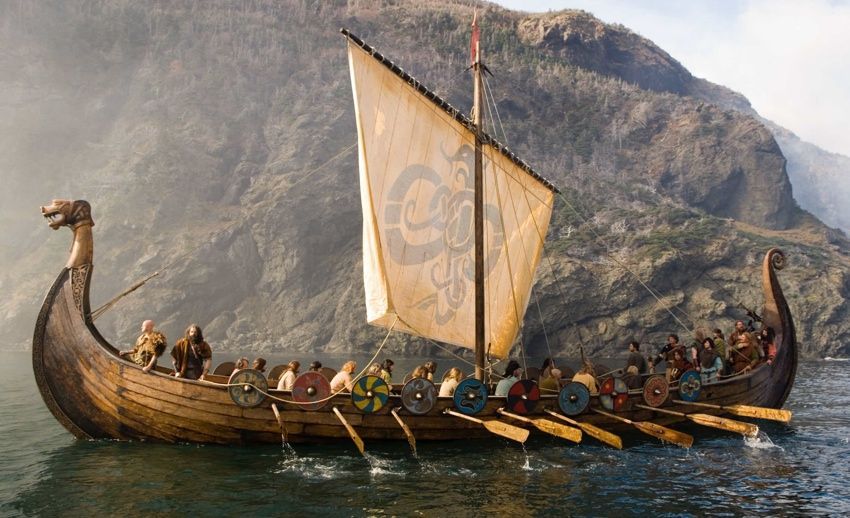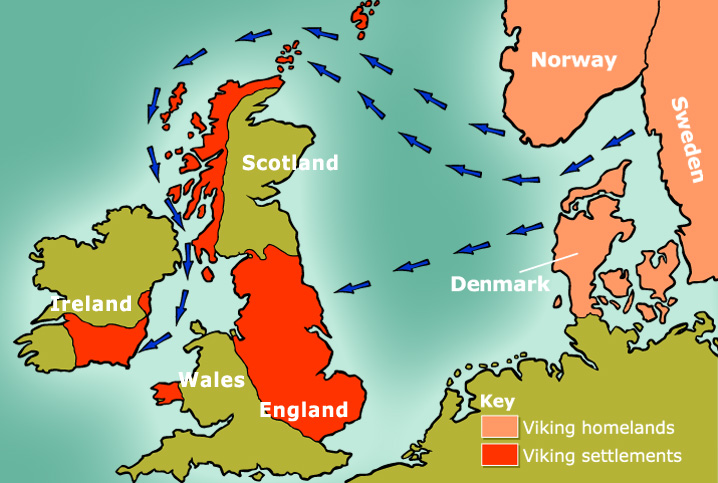
PHOTO: the-wanderling.com
In the late 9th century, Vikings, or ‘Northmen’ as they were known to historical peoples, hit the beaches of England in scores of dragon-studded long-ships prepared to conquer the island for themselves.
Over the next century, they would come to be the dominant culture: ‘Saxon’ culture. They brought their poetry, language, religion music, metalworking, and way of war to the native Celts living in England already. They would remain rulers of Britain until William the Conqueror sailed from France in 1066 to take the throne of England for himself.
This year, archaeologists working in Lincolnshire, England, just on the shores of the River Trent have discovered the remains of a massive Viking war camp. From what they’ve uncovered already, we know that the camp was hardly a rest stop for a small band of warriors. It was a full-on military base, larger than most towns of the era, kitted with its own traders, families, feasts, and entertainment.
“From what has been found at the site, we know they were repairing their boats there and melting down looted gold and silver to make ingots – or bars of metal they used to trade,” Professor Dawn Hadley, leader of the research on the site being conducted by University of Sheffield’s Department of Archaeology said, “Metal detectorists have also found more than 300 lead game pieces, suggesting the Vikings, including, women and children, were spending a lot of time playing games to pass the time, waiting for spring and the start of their next offensive.”
The Vikings were no stranger to England. For a hundred years, they’d been the scourge of Europe, raiding coastal monasteries for their caches of gold, other precious items, and supplies.
“The Vikings had previously often raided exposed coastal monasteries and returned to Scandinavia in winter,” Professor Julian Richards with the University of York explained, “but in the later ninth century they came in larger numbers, and decided to stay. This sent a very clear message that they now planned not only to loot and raid – but to control and conquer.”

PHOTO: bb.co.uk
Metal detectorists working at this location in Lincolnshire have uncovered a wealth of artifacts. They’ve found over 300 coins (including 100 Arabic silver coins that would have come through Viking trade routes), 50 pieces of silver, brooch fragments and ingots, 300 gaming pieces, iron tools, spindle whorls, needles, and fishing weights.
Researchers working on the the site believe that, with the River Trent to the west, and the surrounding land prone to flooding, the Vikings knew this site was extremely defensible and set up permanent shop quickly in order to launch a full-scale campaign against the surrounding towns, such as York. In fact, this camp would have been bigger than York was at the time.
The best part about this entire find is that all the research has been used to create a virtual reality experience based on real objects found at the site.
“The new research by the Universities of Sheffield and York has been used to create the most realistic images of the camp to date, based on real findings. These images are also believed to be the most realistic Virtual Reality ever created anywhere of the Viking world.” – Dr. Gareth Beale, York’s Digital Creativity Labs.
This virtual reality experience is part of an exhibit that opened at the University of York on Friday (May 19th, 2017), and joins scores of similar historical virtual reality experiences being constructed in museums around the world. As our science advances, so does our understanding of the past. Virtual reality exhibits help the public get a real understanding of historical sites that they might never have otherwise.
Who knows what’s next?

